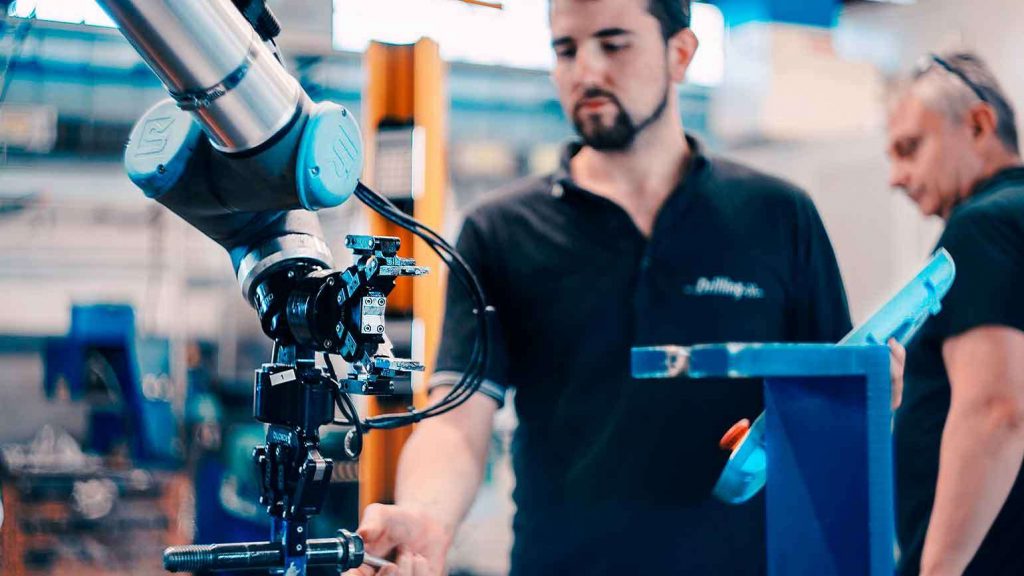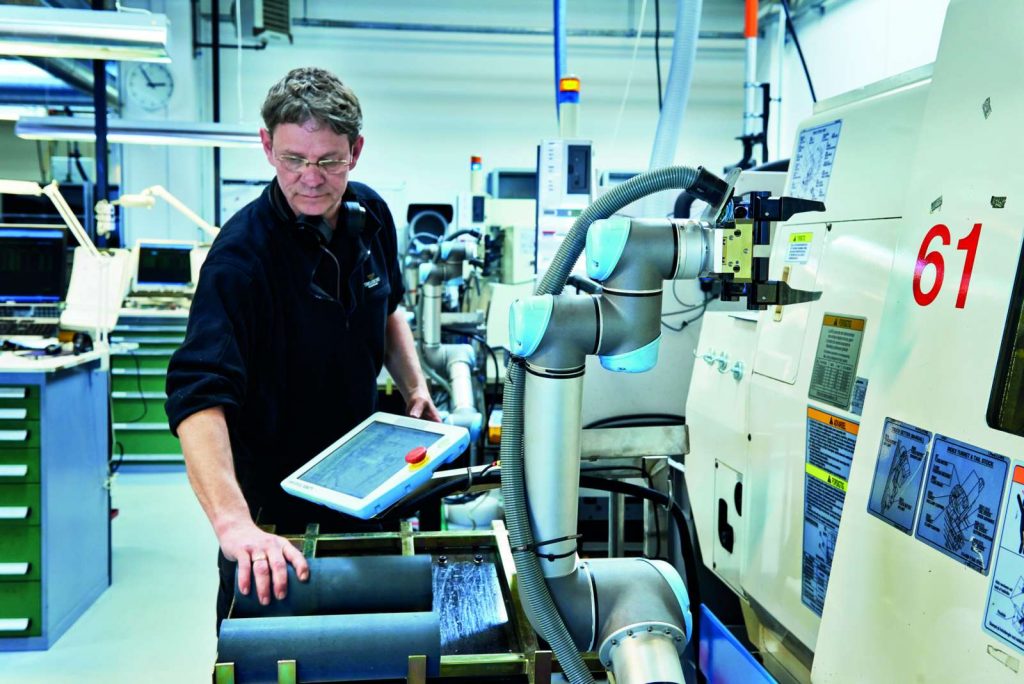The best way to describe a gripper is through thinking of the human hand. Just as a human hand is used to hold, handle, tighten, and release objects, grippers are fitted into robots to enable them to pick up and grasp items. In manufacturing, collaborative industrial arm grippers allow manufacturers to automate various processes such as machine tending, inspection, assembly and pick & place.

There are various styles and sizes of grippers that are available. Grippers can either be attached to a robot or be part of a fixed automation system. This article will look at four major types of robotic grippers together with their advantages and disadvantages.
Types of Grippers
1. Vacuum Grippers
Due to its high suppleness level, the vacuum robot gripper has been the standard end-of-arm tooling in manufacturing. Vacuum grippers usually use polyurethane or a rubber suction cup to pick up objects. However, some vacuum grippers use a closed-cell layer made from rubber instead of the suction cups to complete their application.
Pros of Vacuum Grippers
- Vacuum grippers can handle various types of objects regardless of their positions, whether perfect or imperfect.
- Vacuum grippers cost less as compared to other types of grippers.
Cons of Vacuum Grippers
- Vacuum grippers are highly sensitive to dusty conditions.
- Due to their use of vacuum pumps and power compressed air, vacuum grippers tend to use vast amounts of electricity, resulting in added costs.
2. Pneumatic Grippers
One of the things that make pneumatic grippers popular is their compacted size and lightweight. Their compressed size makes it possible for them to be incorporated into fitted spaces.
Pneumatic grippers have been nicknamed “bang-bang” actuators mainly because of the noise they create when the metal-on-metal pneumatic grippers are in operation. Pneumatic grippers can either be closed or opened.
Pros of Pneumatic Grippers
- They don’t require large spaces as they can operate in tight spaces.
- They have an extensive grip force range.
- They have fast response times.
- They are not expensive.
Cons of Pneumatic Grippers
- They can only handle single part types.
- They require compressed air to function.
- They provide limited position and force control.
3. Hydraulic Grippers
For applications that entail significant volumes of force, hydraulic grippers are the best as they provide utmost strength. Hydraulic fluids usually power hydraulic grippers, and they generate their forte from pumps that can provide a high of 2000psi.
Pros of Hydraulic Grippers
- Their excellent gripping power makes them ideal for heavy-duty applications.
Cons of Hydraulic Grippers
- Due to the oil used in their pumps, hydraulic grippers tend to be messier than other types of grippers.
- They usually require more maintenance as the grippers tend to be more damaged due to the force used in their application.
4. Electric Grippers
Electric grippers are most suited for applications that require light or moderate gripping force and high speed. Although they do not have high gripping power as hydraulic grippers, electric grippers have become a more popular choice for applications such as pick & place and machine tending.
Electric grippers usually come in two or three jaw configurations. For handling round or cylindrical objects, the three-jaw electric grippers are more preferred.
Pros of Electric Grippers
- Their microprocessors enable you to vary the force and speed of gripping objects.
- They can easily handle various part types due to an added force sensor.
Cons of Electric Grippers
- Compared to other grippers, electric grippers provide less gripping force.
- They are more expensive.
Final Word
As a manufacturer, automating your manufacturing processes can go a long way in increasing productivity, minimizing waste material during production processes, saving time, cutting down costs, and ensuring high-quality end products.
The four types of robotic grippers discussed in this article are intended to give you the general information to help you chose a suitable gripper for your automation process. Depending on the area you need to automate, we hope that this article will guide you into making the best choice of a robotic gripper that will help you meet your needs.
